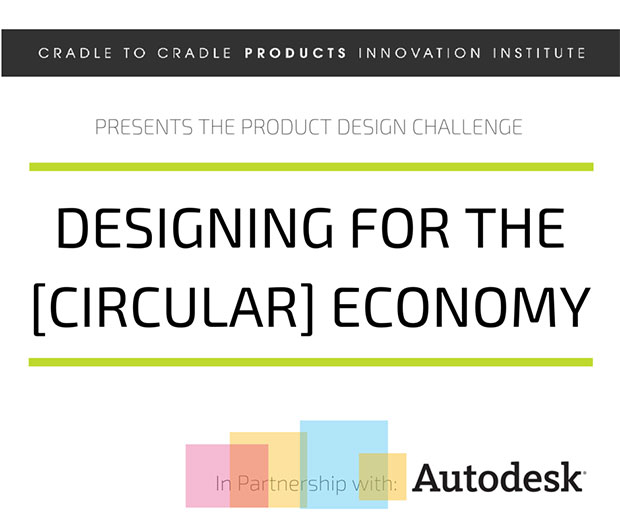
Latest News
February 12, 2015
The idea of “being green” is an idea now integrated into everyday life. Companies are creating and marketing products that are certified as organic, fair trade and environmentally friendly. But being eco-friendly is more than just a trend. It’s now part of a wider initiative to ensure engineering and design is sustainable.
So what exactly is sustainable design? According to the U.S. General Services Administration, its objectives are “to reduce consumption of non-renewable resources, minimize waste and create healthy, productive environments.”
For engineering designs to be considered sustainable they must meet a variety of requirements — social, economic and environmental — that are not always considered in a traditional workflow. To help designers learn more about this topic, the Cradle to Cradle Products Innovation Institute is partnering with Autodesk to host its first Cradle to Cradle Product Design Challenge.
 Cradle to Cradle’s Product Design Challenge is helping designers think about how their products can fit into a circular economy.
Cradle to Cradle’s Product Design Challenge is helping designers think about how their products can fit into a circular economy.“The challenge grew out of our [online] course, and our course really grew out of our mission,” says Stacy Glass, vice president at Cradle to Cradle. “Our mission is to start a new industrial revolution, and the revolution really needs to start with designers. And we know to really integrate new learning requires applications, so the design challenge is just that.”
The goal of this challenge is to have students and professionals create products that promote efficiency, reduce waste and fit into a circular economy. “We’re talking about designing products where the materials can be infinitely reused,” Glass says.
A Crash Course in Sustainability
The competition starts with entrants taking a one-hour course created by Cradle to Cradle. It is online and self-paced, and provides strategies, tools and examples of the organization’s design principles. To teach the subject matter, videos are included of how to translate each principle into practice. The curriculum also has case studies and examples of companies using sustainable design.
Through the curriculum, designers will learn about Cradle to Cradle’s tenets of sustainable design. The topics covered are Cradle to Cradle design basics, the circular economy, material health, material reutilization, renewable energy, water stewardship and social fairness.
“We truly believe that when you design with [these] principles in place, you can have a planet with billion[s of] people and everybody can prosper,” says Glass. “We [also] wanted to offer a course. I work with manufacturers and talk with them often about making these kinds of changes to their products. But the reality is, if products were designed right from the beginning, we wouldn’t have to be going backwards [and making products more sustainable].”
This course, Glass says, is a way to reach out to students and professionals to instill sustainable design principles early on in the design process. This way, engineers are creating a resourceful product from the beginning instead of making changes after the product is already on the market.
After taking the course, interested applicants can take a short quiz and receive a certificate of completion.
For submissions, the judges are looking for designs that implement the topics discussed in the course. Products can be for any industry or application. “This kind of design approach and these kinds of principles apply across industries and across products,” Glass says.
Cradle to Cradle’s certified product registry showcases this sentiment, including products such as clothing, soap, building materials, toys and furniture.
In addition to course completion, submitted projects must include the following:
• Product description with accompanying image;
• Reutilization cycle and business model;
• Material selection and overview.
By having applicants include a BOM (bill of materials) and business model, Glass adds, Cradle to Cradle is challenging designers to start thinking of how materials can affect the product’s reusability and the implications of an economy where products can often have more than one owner.
While it is not required that entrants design their products with Autodesk Fusion 360, those that do will be considered for multiple prize categories.
The judges will select winners from three categories: Best Student Project, Best Young Professional Project and Best Use of Autodesk’s Fusion 360 Tool.
The deadline for entries is March 15, 2015. Winners will be announced in April.
Below is a video with more information about the Cradle to Cradle Institute:
Subscribe to our FREE magazine, FREE email newsletters or both!
Latest News
About the Author
Jess Lulka is a former associate editor for Digital Engineering. Contact her via [email protected].
Follow DE





